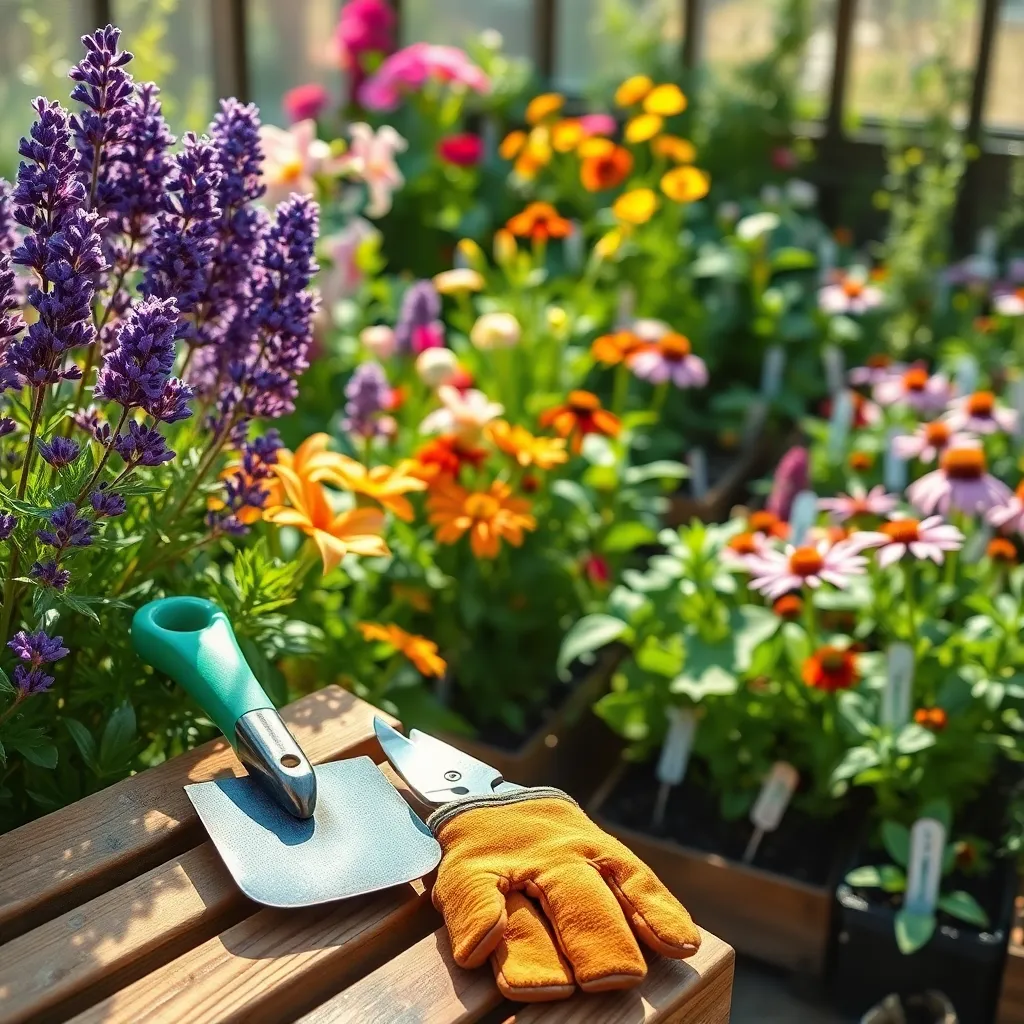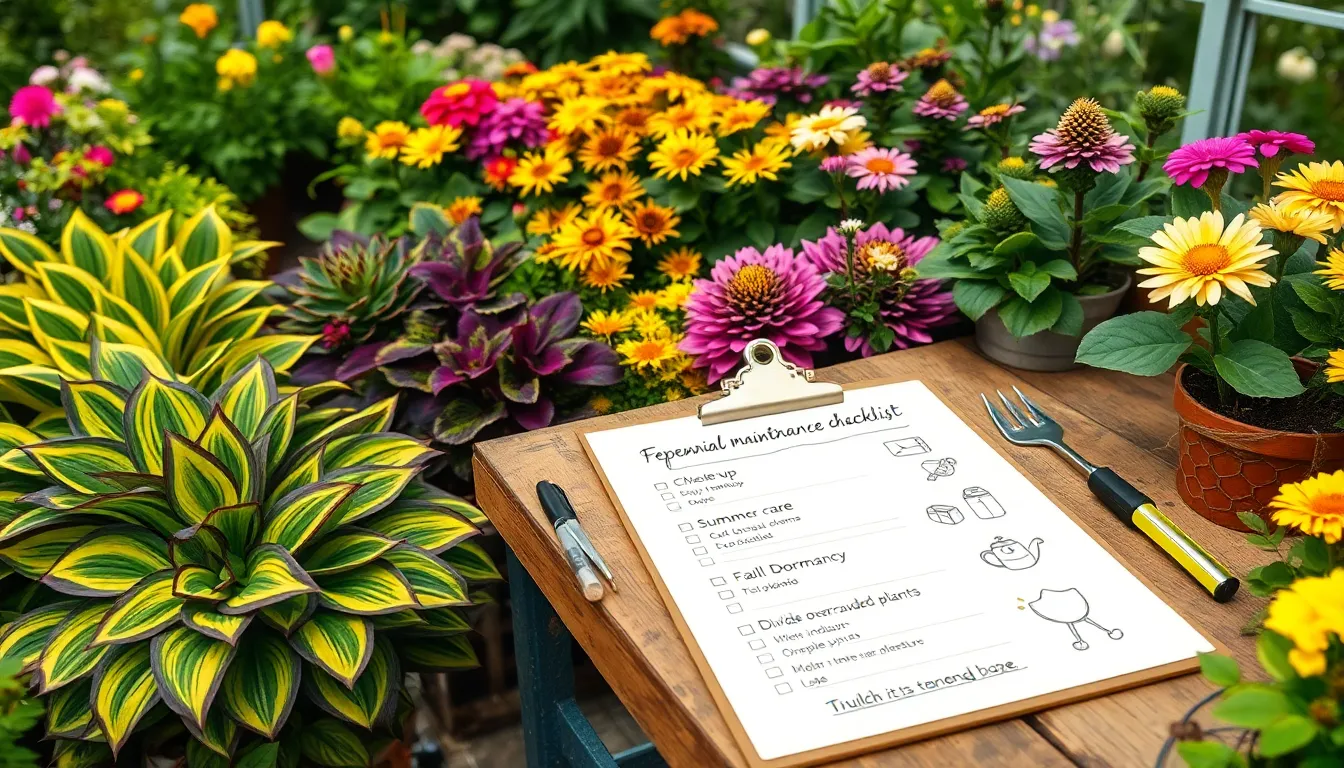Perennials are the steadfast companions of any garden, offering a reliable splash of color and foliage year after year. Whether you’re just starting your gardening journey or have a seasoned green thumb, understanding the nuances of perennial maintenance can transform your garden from ordinary to extraordinary. In this ever-changing world, having a garden that requires less annual replanting but still provides perennial beauty is not just a luxury—it’s a smart, sustainable choice.
Taking good care of your perennials is like nurturing a long-term friendship; it requires attention, understanding, and a touch of patience. In this article, we’ll guide you through the essential tasks that keep your perennials thriving, from pruning and dividing to fertilizing and pest management. You’ll gain insights into when and how to deadhead effectively, ensuring your plants stay healthy and vibrant. Our checklist is designed to be your go-to resource, offering practical, actionable steps that are easy to follow, no matter your level of expertise.
Embarking on this perennial maintenance journey invites you to connect more deeply with your garden and its rhythms. You’ll discover how to anticipate the needs of your plants and respond with care that makes all the difference. By the end of this guide, you’ll be equipped with the knowledge to create a flourishing garden that rewards you with beauty and serenity season after season. Let’s dive in and unlock the secrets to maintaining a perennial garden that you can be proud of all year long.
Essential Tools for Perennial Care

To effectively care for perennials, having the right tools is essential for both novice and seasoned gardeners. A sturdy pair of hand pruners is indispensable for trimming back dead growth and encouraging new blooms throughout the growing season.
Gardeners should also invest in a quality trowel for transplanting and dividing perennials, which is crucial for maintaining healthy, vibrant gardens. Choose a trowel with a comfortable grip and a durable, rust-resistant blade for long-lasting performance.
For those dealing with larger perennial beds, a spade or garden fork can make the task of turning soil and removing stubborn weeds more manageable. These tools are particularly useful when preparing the soil for new plantings or when rejuvenating established beds.
Additionally, a watering can with a fine rose head is ideal for gentle watering that prevents damage to tender new growth. Consistent watering is important, especially during dry spells, to ensure perennials thrive and develop strong root systems.
Seasonal Pruning and Deadheading Tips

Seasonal pruning and deadheading are vital tasks to keep your perennial garden thriving. Regularly removing spent flowers helps redirect the plant’s energy towards new growth and prevents unwanted seed formation.
In early spring, use sharp, clean pruners to cut back last year’s dead growth to the base of the plant. This encourages healthy new growth and helps prevent disease from overwintered plant material.
As the growing season progresses, consistently check your perennials for faded blooms. Using your fingers or scissors, pinch or snip just above the next leaf node to promote a tidy appearance and stimulate further flowering.
For advanced gardeners, consider the timing of your pruning to enhance flowering. For example, some perennials like lavender benefit from a light trim after their first bloom to encourage a second flush of flowers.
When deadheading, make sure to identify and avoid removing any developing flower buds. This ensures you don’t inadvertently reduce the plant’s future blooms.
After pruning, remember to clean your tools with rubbing alcohol to prevent the spread of disease. Keeping your garden tools sanitized is a simple yet effective way to maintain plant health and vigor.
- Prune in early spring to remove dead growth.
- Deadhead regularly during the growing season.
- Clean tools after each use to avoid disease transfer.
Fertilizing Strategies for Robust Growth

Boosting perennial growth effectively hinges on a well-timed fertilizing strategy. Start by applying a balanced, slow-release fertilizer in early spring when new growth appears to ensure plants have the nutrients they need right from the start.
Choosing the right fertilizer is crucial for robust growth. For most perennials, a 10-10-10 formula works well, providing equal parts nitrogen, phosphorus, and potassium, but always check specific plant needs.
Once you’ve selected your fertilizer, application technique matters. Sprinkle the granules evenly at the base of each plant, avoiding contact with the foliage to prevent burning, and water thoroughly afterward to help the nutrients seep into the soil.
During the growing season, consider supplementing with liquid fertilizers for a quick nutrient boost. This is particularly beneficial for perennials with higher nutrient demands or those growing in poor soil conditions.
Finally, don’t forget the importance of organic matter. Incorporating compost into your perennial beds not only improves soil structure but also slowly releases nutrients, enhancing the overall fertility of your garden.
Weed Control and Pest Management

Keeping your perennial garden free of weeds is essential for healthy plant growth. Begin by applying a thick layer of mulch, about two to three inches, which helps to suppress weeds and retain soil moisture.
For gardeners battling persistent weeds, consider using a pre-emergent herbicide at the start of the growing season. This approach prevents weed seeds from germinating, but ensure it’s suitable for use around your specific perennials.
Hand-pulling weeds is another effective method, especially in smaller gardens. Ensure you remove the entire root system to prevent regrowth, and do so after a rain when the soil is moist and pliable.
In addition to weed control, managing pests is crucial for the vitality of your perennials. Start by regularly inspecting your plants for signs of pest damage, such as chewed leaves or discolored spots.
Introducing beneficial insects like ladybugs and predatory beetles can help reduce pest populations naturally. These insects prey on harmful pests and can be purchased from garden centers or online.
For more advanced pest management, consider using organic insecticidal soap or neem oil. These products are effective against a range of pests and are safe for most perennials when used according to the instructions.
Preparing Perennials for Winter

As winter approaches, it’s crucial to protect your perennials to ensure they thrive come spring. Begin by cutting back the dead foliage to about two inches above the ground, which helps prevent diseases and pest infestations.
Next, apply a thick layer of mulch around the base of your plants, using materials like straw, shredded leaves, or bark. This insulates the roots against freezing temperatures and maintains soil moisture during the cold months.
For those in colder climates, consider adding an extra layer of protection by using burlap or frost blankets. Wrap these materials around delicate perennials, securing them with twine to shield against harsh winter winds.
Before the first frost, water your perennials deeply to hydrate them for the dormant season. This is especially important for newly planted perennials, as their roots are not yet fully established.
Advanced gardeners might try dividing overcrowded perennials in early fall to promote healthier growth. Dig up the clumps, separate them, and replant them in well-draining soil enriched with organic matter.
Finally, label your perennial beds with plant markers before winter sets in. This helps identify plants when they are not in bloom and aids in planning for next spring’s garden layout.
Conclusion: Growing Success with These Plants
As we conclude ‘The Ultimate Perennial Maintenance Checklist,’ let’s revisit the foundational concepts that will keep your relationship thriving year-round. First, prioritize open communication to ensure both partners feel heard and valued. Second, cultivate trust by consistently showing reliability and honesty. Third, maintain intimacy by making time for shared experiences and physical closeness. Fourth, practice empathy to understand and respect each other’s perspectives. Lastly, embrace adaptability to navigate life’s inevitable changes as a team.
To put these concepts into action, consider setting aside a dedicated time each week to check in with your partner. Use this time to discuss not just logistics, but feelings, dreams, and concerns, reinforcing your connection.
Remember, relationships are a journey, not a destination. Save or bookmark this article as a handy reference to remind you of the essential practices that nurture lasting bonds. In doing so, you’re investing in a future of shared happiness and mutual growth. Feel empowered knowing that with each step, you and your partner are crafting a love that endures. Here’s to a flourishing relationship that stands the test of time!





